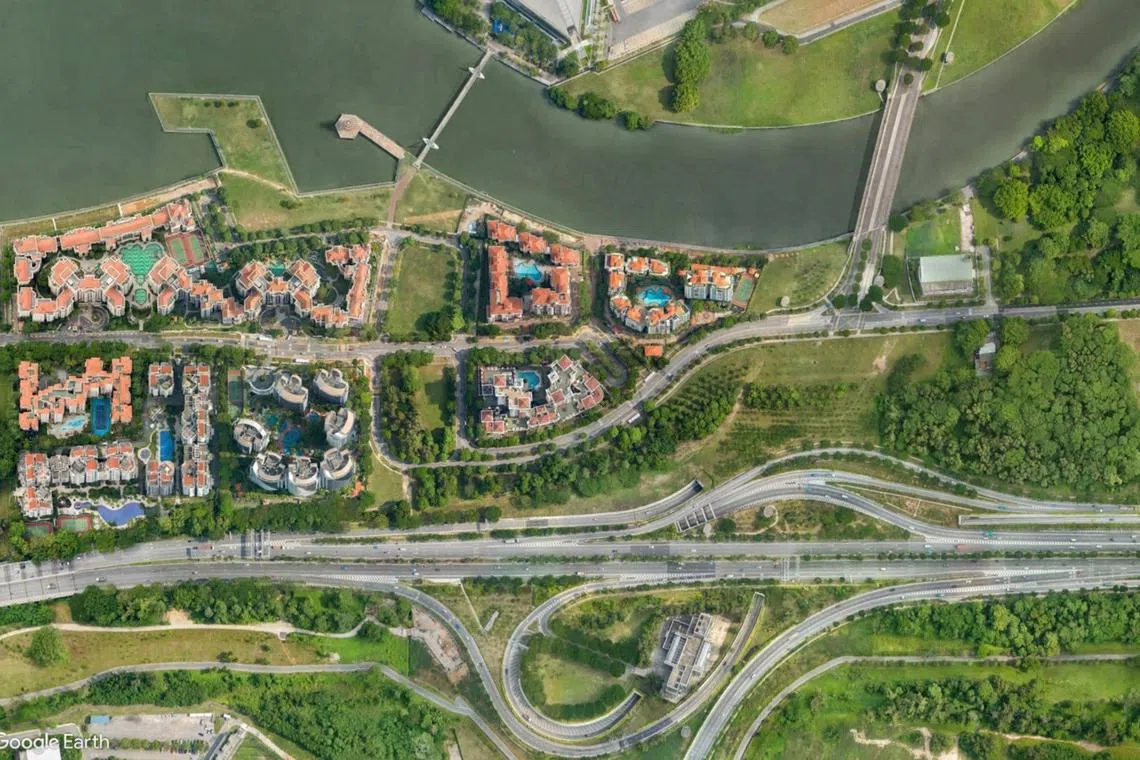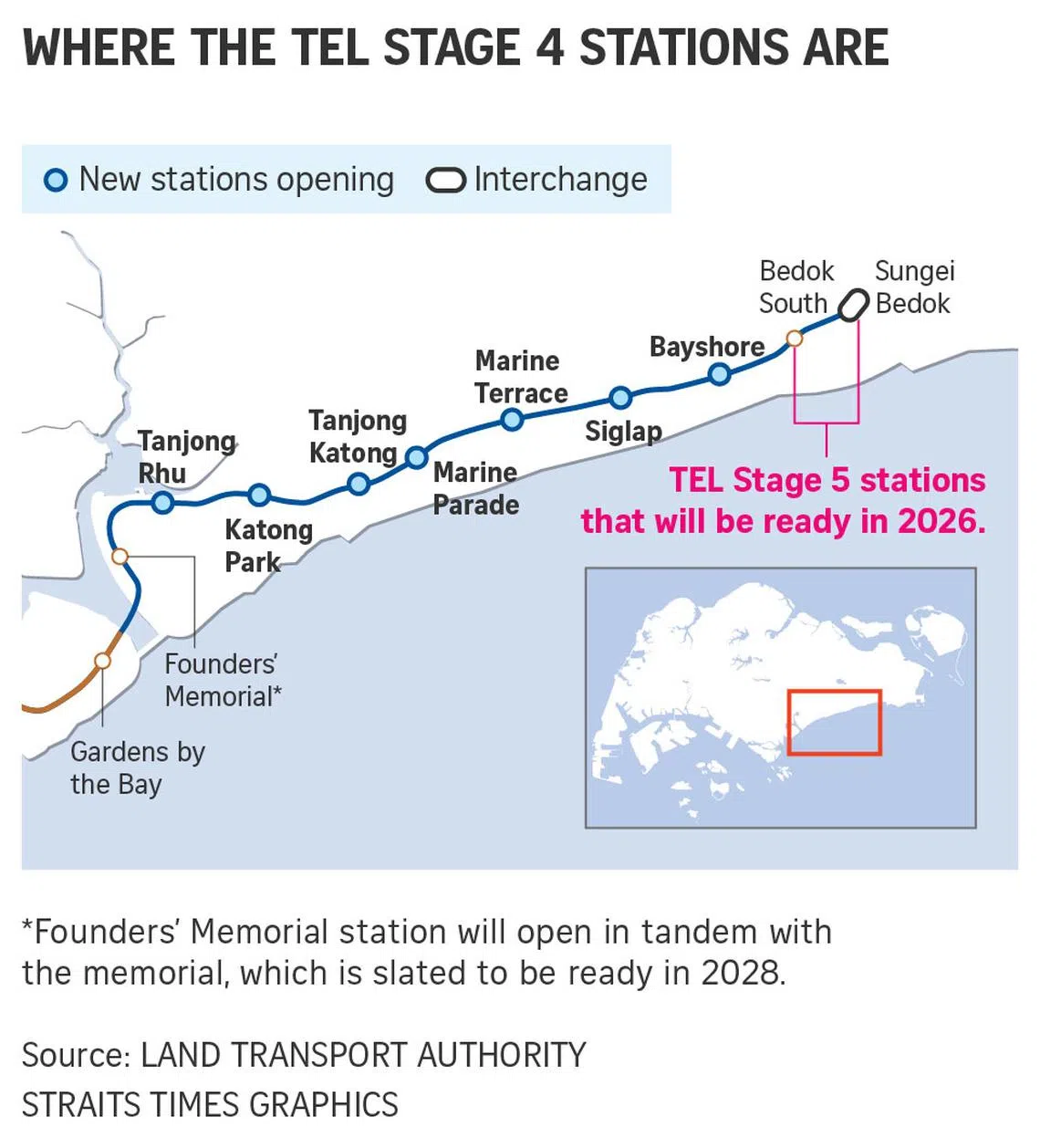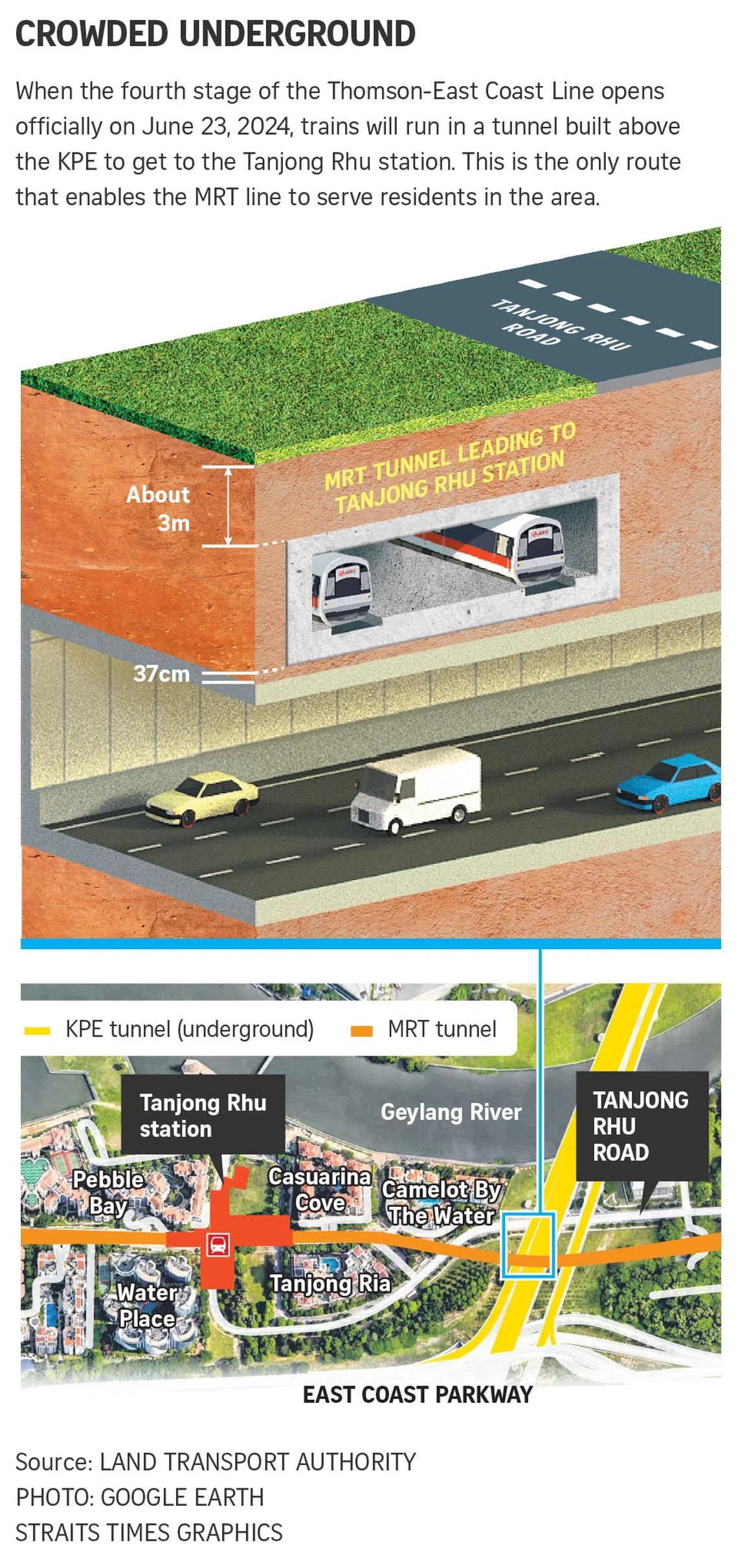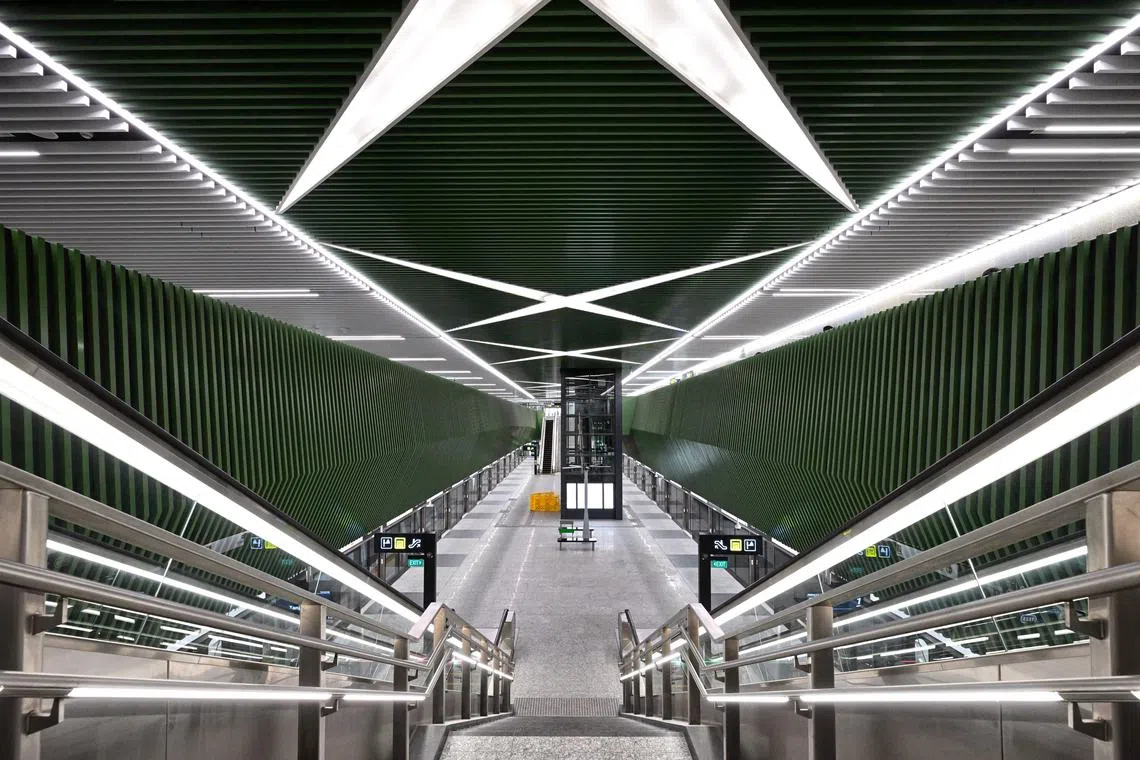TEL Stage 4: The challenge of building an MRT tunnel close to the KPE
Sign up now: Get ST's newsletters delivered to your inbox

Routing the tunnel to go across the KPE was necessary for the MRT line to serve residents in the Tanjong Rhu area (above).
PHOTO: GOOGLE EARTH
Follow topic:
SINGAPORE - Thirty-seven centimetres – that is all that separates a section of the Thomson-East Coast Line (TEL) MRT tunnel running parallel to Tanjong Rhu Road from the Kallang-Paya Lebar Expressway (KPE) tunnel beneath it.
The gap is less than half the height of some car tyres.
Routing the tunnel – which is about 3m underground – to go across the KPE was necessary for the MRT line to serve residents in the Tanjong Rhu area, a spokesperson for the Land Transport Authority (LTA) told The Straits Times on May 20, ahead of the opening of the fourth stage of the TEL.
Seven new MRT stations – Tanjong Rhu, Katong Park, Tanjong Katong, Marine Parade, Marine Terrace, Siglap and Bayshore – will open on June 23.
Avoiding the underground expressway, the spokesperson said, would mean locating the MRT tunnel beyond East Coast Parkway and away from the residential area.
This portion of the tunnel took 24 months to complete. It involved digging up a trench to construct the tunnel before filling up the surface, instead of drilling through the earth without removing the ground above.
To ensure that construction could be done safely, piles pre-cut to the correct length were driven into the ground to form a temporary earth-retaining structure. LTA said this step was “crucial to prevent the risk of over-driving into the KPE structure”.
To minimise the risk of damaging the KPE, the excavators used to dig up the earth were fitted with flathead buckets, rather than the typical buckets with teeth.
The digging was done with measurements taken at each step, to ensure that the soil excavation went no farther than 1m above the base slab of the MRT tunnel, leaving enough buffer from the KPE.
Monitoring instruments were fitted into the expressway’s structure to provide real-time data to ascertain that the structure was not affected by the MRT construction work and that the temporary earth-retaining structures put in place for the tunnel worked as intended. The instruments were removed when the work was completed.
TEL Stage 4 will be connected to the first three stages of the line, from Woodlands North to Gardens by the Bay.
All four stages will eventually be linked to the fifth stage of the MRT line expected to be ready in 2026, comprising the Bedok South and Sungei Bedok stations.

LTA said that with the MRT line cutting through a built-up urban environment, space limitation was a construction challenge.
Mr Lee Yang, senior project engineer at LTA, said that some stations are just metres from the boundary walls of existing buildings. The amount of space available for construction work was as narrow as just 9m across at some locations.
During construction, multiple traffic diversions had to be carried out to free up space for construction. The diversions lasted several months to a year. LTA said the diversions were done only after “extensive traffic impact studies and stakeholder engagements”.
The Tanjong Rhu station is flanked by residential buildings. To minimise the tunnel’s footprint and to fit the station within the tight underground space, the two train tracks are positioned next to each other and each track has its own platform at its side. This is the only station along TEL Stage 4 to be set up this way.
This is unlike the more common layout, where a single platform serves two trains going in opposite directions.
As such, passengers at Tanjong Rhu station who want to get on a train bound for the opposite direction will have to use escalators to reach the other platform, instead of simply walking across a shared platform.

Farther down the line, the platforms at the upcoming Katong Park and Tanjong Katong stations are stacked on top of each other, owing to the narrow construction corridor, with escalators connecting them.
LTA said this layout “reduces the overall station footprint, deepens the station and avoids encroaching into private land”.
In 2015, 15 homes in Amber Road and Tanjong Katong Road, which are near Tanjong Katong station, were acquired for the construction of the MRT line.
Tanjong Katong station has three exits: one along Tanjong Katong Road and two in Amber Road, while the Katong Park station, which is under Meyer Road and part of Katong Park, has two exits for residents in the area, as well as the nearby Dunman High School.
Over at Marine Parade station, underground utilities, such as power cables and water pipes, had to be relocated without disrupting daily activities. Its location in Marine Parade Road – a busy thoroughfare that serves residential buildings, hotels, shopping malls and other amenities – added to the challenge, said LTA.
To identify and move the cables and pipes, Joo Chiat Road, which is near Marine Parade station, was closed between April and November 2017.
The station is located along Marine Parade Road and reaches the Still Road South junction. It has six exits. Besides serving residents in the area, the station will improve connectivity to malls such as Parkway Parade, the Marine Parade Central Market and Food Centre, as well as a nearby hotel.

At Marine Parade station, underground utilities, such as power cables and water pipes, had to be relocated without disrupting daily activities.
PHOTO: ST FILE
LTA said construction of this part of the MRT line and the seven stations was also affected by the different ground conditions.
Being near old coastlines, the earth comprises marine clay and sand. Such materials can move downwards when being worked on, so measures were set in motion to ensure safety during construction so as not to compromise the surrounding buildings.
These included pumping cement into the ground to strengthen the soil and installing temporary earth-retaining structures to stabilise the ground before construction work could begin.
This process of improving the ground would typically take several months, before soil investigation tests could be conducted. Modifications were also made to the tunnel boring machines to work under such conditions.
When fully completed in 2026 with the addition of the Bedok South and Sungei Bedok stations


